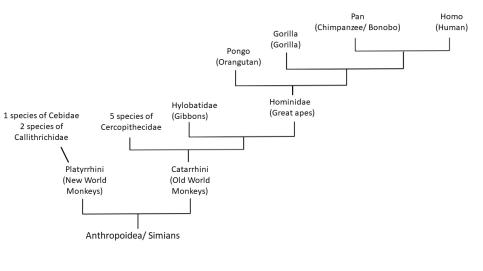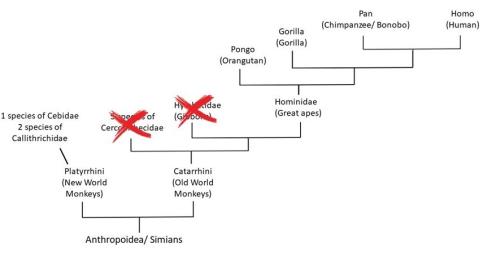Discussion
Social brain hypothesis
- Findings of the present study suggest that gibbons do not exhibit cooperative behaviours among each other
- Behavioural observations revealed that the gibbons spent significantly more time alone than with their conspecifics and were very little involved in social interactions
- As mentioned above, gibbons are socially monogamous and live in small groups
--> Support of the social brain hypothesis
Origin of cooperative behaviours within the primate taxa

- Cooperative behaviours have not only been invested in apes but also in several monkey species:

- Based on the findings of previous research and the present study, occurrences of cooperative behaviours appear to have evolved in two lineages:
- Platyrrhini (i.e. Callitrichidae and Cebidae)
- Catarrhini (i.e. Hominidae)
- Suggestion: This development is a result of convergent evolution
- The gap between families that do and do not exhibit the corresponding behaviours seems to be too large in order to consider this trait to be a homology
- More likely: Similar selective pressures and adaptations to comparable circumstances have independently caused the development of cooperative behaviours
- All the mentioned mammal species that were successful in the cooperative problem-solving tasks have in common that they are not socially monogamous but live in groups with fluctuating social structures and flexible breeding compositions
Outlook
Cooperation test with siamangs (Symphalangus syndactulus) --> Will they be more successful?
- Live sympatrically with H. lar
- More cohesive groups than H. lar
- More socially involved than H. lar
Responsible for this page:
Director of undergraduate studies Biology
Last updated:
06/02/18
